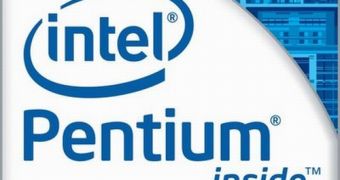With all the hype built around Sandy Bridge ever since its launch, it's sometimes hard to remember that a wide part of Intel's processor lineup is made up of CPU's based on older architectures, and the company is still supporting these as it has just released a new ultra low-voltage Westmere SKU, the Pentium ULV U5600.
Just like all the other ULV chips released by Intel, this new processor features improved energy efficiency and is going be used in notebooks from such manufacturers as Acer, Toshiba and Samsung.
Moving on to the specifications of the chip, the U5600 is based on the 32nm Westmere technology and integrated two 1.33GHz CPU cores, 3MB of shared L3 cache, as well as a dual-channel memory controller that supports up to 8GB of DDR3 memory clocked at 800MHz.
In addition, the Pentium ULV U5600 also gets integrated graphics, with dynamic frequency switching, the GPU clock varying between 166MHz and 500MHz, according to the application load.
However, other advanced features such as Turbo Boost or Intel Hyper-Threading are not enclosed, the CPU even lacking virtualization support, a feature that is supported by less expensive mobile Celeron CPUs.
Its TDP is rated at a low 18W for the entire chip, including the two cores and the on-board graphics controller.
According to the Donanimhaber website, Acer will be the first manufacturer to use these chips in the Aspire 1430 and the Aspire 1830 notebook models, Samsung as well as Toshiba also prepping models based on the new CPU.
Westmere is the name given to the 32nm die shrink of the Nehalem core and was introduced at the beginning of 2010.
Compared to Nehalem, the architecture features a set of Advanced Encryption Standard (AES) instructions, that speed up encryption and decryption threefold, as well as processor integrated graphics.

 14 DAY TRIAL //
14 DAY TRIAL //